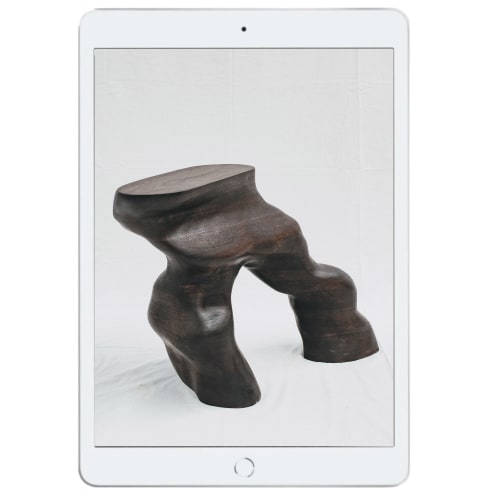Furniture as art is not a new phenomenon. The David Gill Gallery and the Carpenters Workshop Gallery in London’s Mayfair have been retailing it for many years, in a similar manner to how fine art is sold through galleries.
However, unlike paintings that cannot be touched, this furniture is mostly used for the intention that it was made.
The concept of furniture as art was first introduced to Australia through retailers such as the Gallery Sally Dan-Cuthbert in Rushcutters Bay, Sydney.
“We call this ‘functional or sculptural art’,” says Dan-Cuthbert, pointing out the many chairs, stools, benches and mirrors that can be found in her gallery, which specialises in Australian and New Zealand creatives.
Some of these pieces can be pricey, selling for five-figure amounts, but collectors see them as solid investments that are likely to increase in value over time.
“There has been a 200 per cent price increase for art furniture in the past 10 years, in leading auction houses around the world – whether it’s Christies or Sotheby’s,” says Dan-Cuthbert, who opened her gallery in 2019.
There are a number of pieces at the gallery designed by Michael Gittings, including a coffee table, bench and mirrors. Made from stainless steel and copper, prices start at $6000 for a small stool and up to $30,000 for an armoire.
Pieces created by Trent Jansen and Johnny Nargoodah, who both live in rural areas and beautifully express the outback in a contemporary manner, are also at the gallery.
Nargoodah worked as a saddler in Fitzroy Crossing, in Western Australia, and his aluminium chairs often also boast leather features. Starting at a price of $7000 for a stool and heading north of $45,000 for a cabinet, these pieces are more for people investing, as much as buying fine art.
Dan-Cuthbert attributes part of the expense due to the many hours spent producing the work, the high quality of the materials used, and their scarcity.
She sees her stable of functional artists, such as Gittings, Jansen, Nargoodah and Olive Gill-Hille, as well worth collecting and advises her clients to always buy from the heart.
“You need to have an emotional response to a piece, just like a painting or sculpture,” she says. “These pieces are limited editions – often only from three to five in total – and signed.”
Living Edge, in Sydney, also sells functional art as part of its broader collections of furniture. Designs such as a Leda Armchair by artist Salvador Dali, produced by BD Barcelona, retail for about $40,000, while The Christallo, designed in 2018, just a year before its designer Alessandro Mendini passed away, has a price tag of $41,000.
Other pieces, such as the late Zaha Hadid’s Aqua Table, come with a price tag of more than $64,000.
“The Christallo was produced as a limited edition of 99 pieces, and each one is hand-painted,” says Jo Mawhinney, director of product brand experience at Living Edge.
With an abstract painted crystal goblet on the front, it is a work of art in and of itself. The piece was conceived to hold glassware, particularly special glasses brought out for fine dining.
Those who see furniture simply in terms of comfort and practicality may baulk at the prices people pay for functional art, however, these pieces undoubtedly bring an artistic quality to a home.
“They add another layer to a space, not just to the walls,” Dan-Cuthbert says.
Stephen Crafti is a specialist in contemporary design, including architecture, furniture, fashion and decorative arts.


